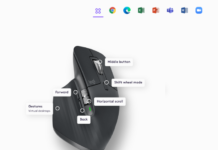The pandemic has made several companies go digital, which gives rise to one of the most important questions about which is the best out of the top three frameworks for building web applications that every front-end developer has heard about: Angular which is a TypeScript-based open-source web application framework, Vue.js which is a progressive JavaScript framework, and finally React which is an open-source, front end, JavaScript library. This article will help you with comparison to choosing the right JS framework
Although either of them can be used alternatively to build front-end applications, they’re not completely the same, and each has strengths and weaknesses on different grounds. To understand the differences and the requirement that the developer needs to fulfill, a comparison needs to be done.
Moreover, all of the frameworks have similarities that it is component-based and allows the rapid creation of UI features, they all have a different structure and architecture.
Architecture
Projects in Angular are mostly structured into Modules, Components, and Services where each one of the applications has at least one root component and one root module. Each component in Angular consists of a Template, a Class that defines the application logic, and MetaData (Decorators). Angular is built using TypeScript, so its use is recommended to get the smoothest experience, but plain JavaScript can also be used.
On the other hand, React has the same architecture as Vue, i.e. interaction with DOM. It doesn’t enforce an architecture pattern and its code can be done in just a few lines to build complex user interfaces. It can be used as a UI library to render element that takes input data and returns what to display. React is based on JavaScript – A declarative, efficient, and flexible JavaScript library. The interesting part with react is, its all components may hold a state, which is not mandatory and can keeps on changing from time to time, depending on the action taken by your user. Thus can track the data for making the application work.
The final comparison is with Vue.js is a library for powerful and interactive web interfaces. Vue.js is focused on the ViewModel layer of the MVVM pattern. It’s known as a progressive framework, which means this framework allows you to create any app structure that you want. This can’t be done in Angular. Vue.js uses DOM-based templating where each Vue instance is connected with a corresponding DOM element.
Popularity
Angular mainly used in enterprise projects, and according to BuildWith’s data, it powers over 97,000 websites. Among all the three frameworks, Angular has the least stars in GitHub with 68k when compared with the other two. According to BuiltWith, Vue is used by over 1 million websites. It’s a very strong, independent project developed and led by an ex-Googler Evan You in the open-source community. Leading with the most stars on GitHub, Vue comes with 176k stars.
Finally, the most used based on BuildWith’s usage statistics, React powers over 2 million websites. Developed and maintained by Facebook, it is also used in many of their projects. Running on the second position is React, one of the most popular JavaScript projects with 160k stars on GitHub.
Performance
According to the results of JS Framework Benchmark, although each of them performed quite well, there are some differences. In the case of selecting rows, Vue is considerably slower than Angular and React. But at the same time, Angular and React are considerably inefficient at swapping rows. In most cases, the differences in rendering benchmarks won’t produce noticeable results. React and Vue are powerful in memory and booting time but Angular is a bit slower. It has slower performance than React and Vue due to the many features of this framework that makes the heavier application and slower performance.
READ MORE: List Of Top 10 Best JavaScript Frameworks To Know
Conclusion
The three frameworks – Angular, React, and Vue is all under very active development in the current industry. They even regularly release new versions and maintain the existing ones, thus it is improving daily and coming up with better choices. But, mistakes made in the beginning may cause problems later. So, choose the framework as per the need, flexibility, and design scalable architecture.
Good Luck! 

















































